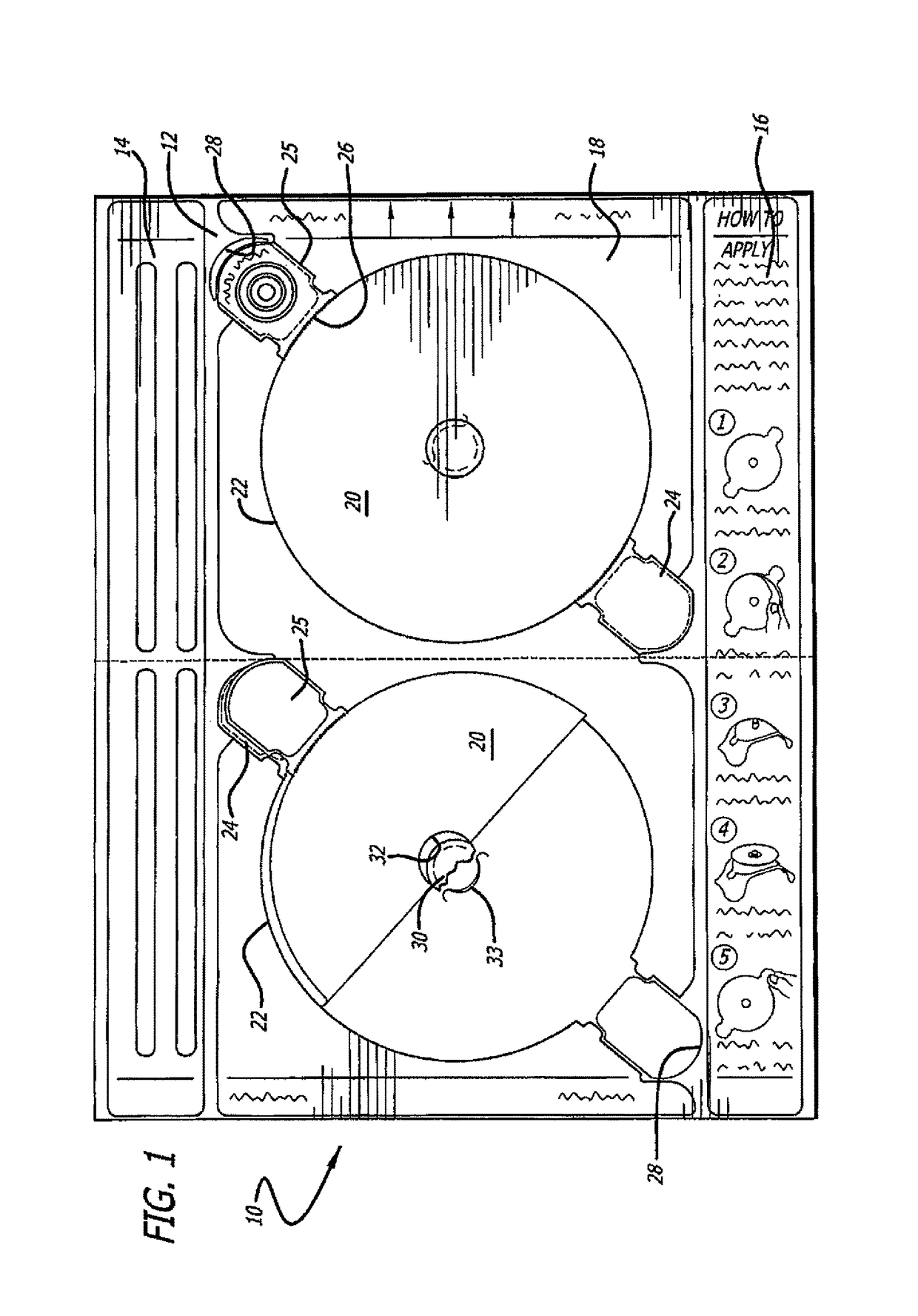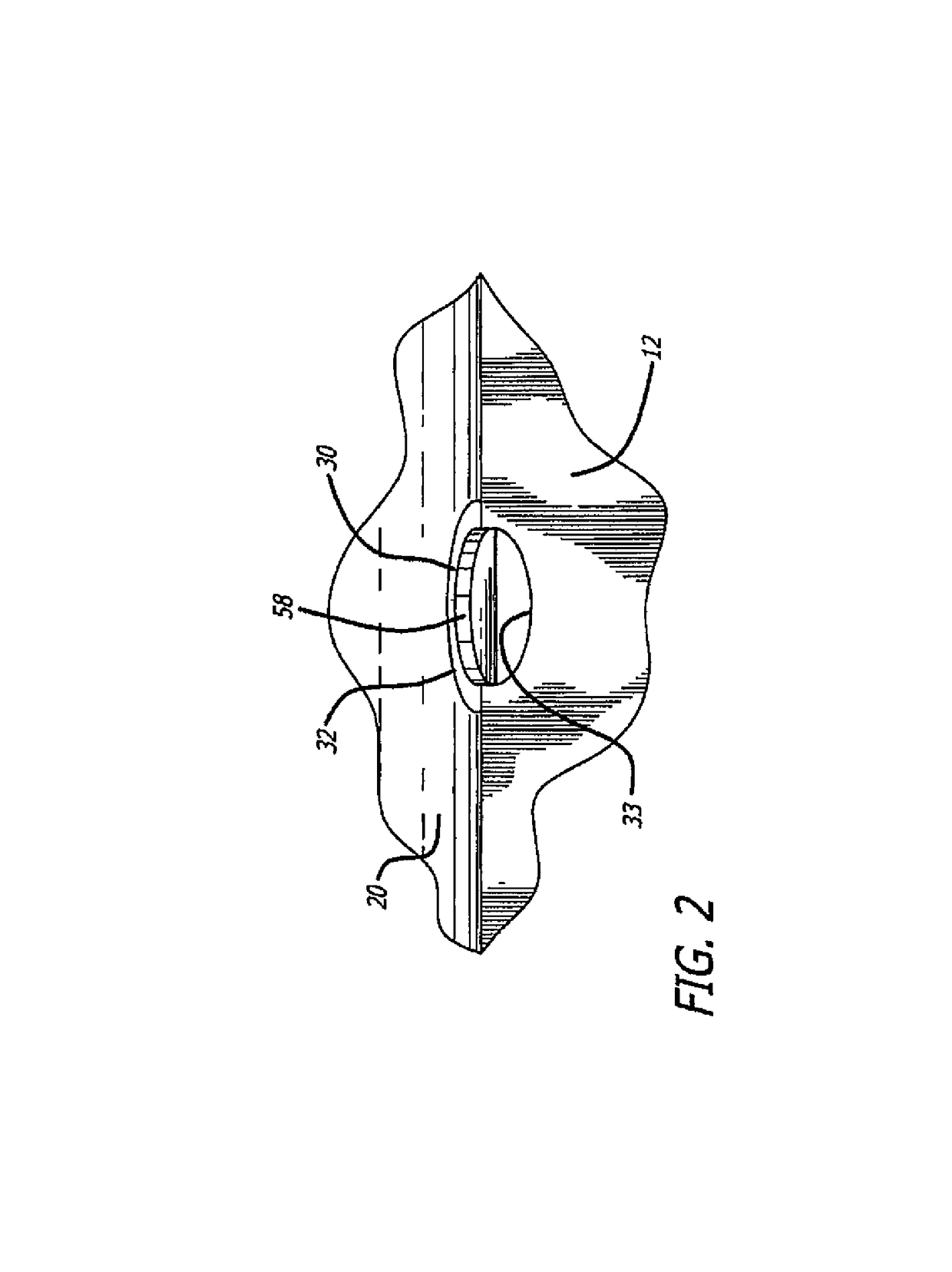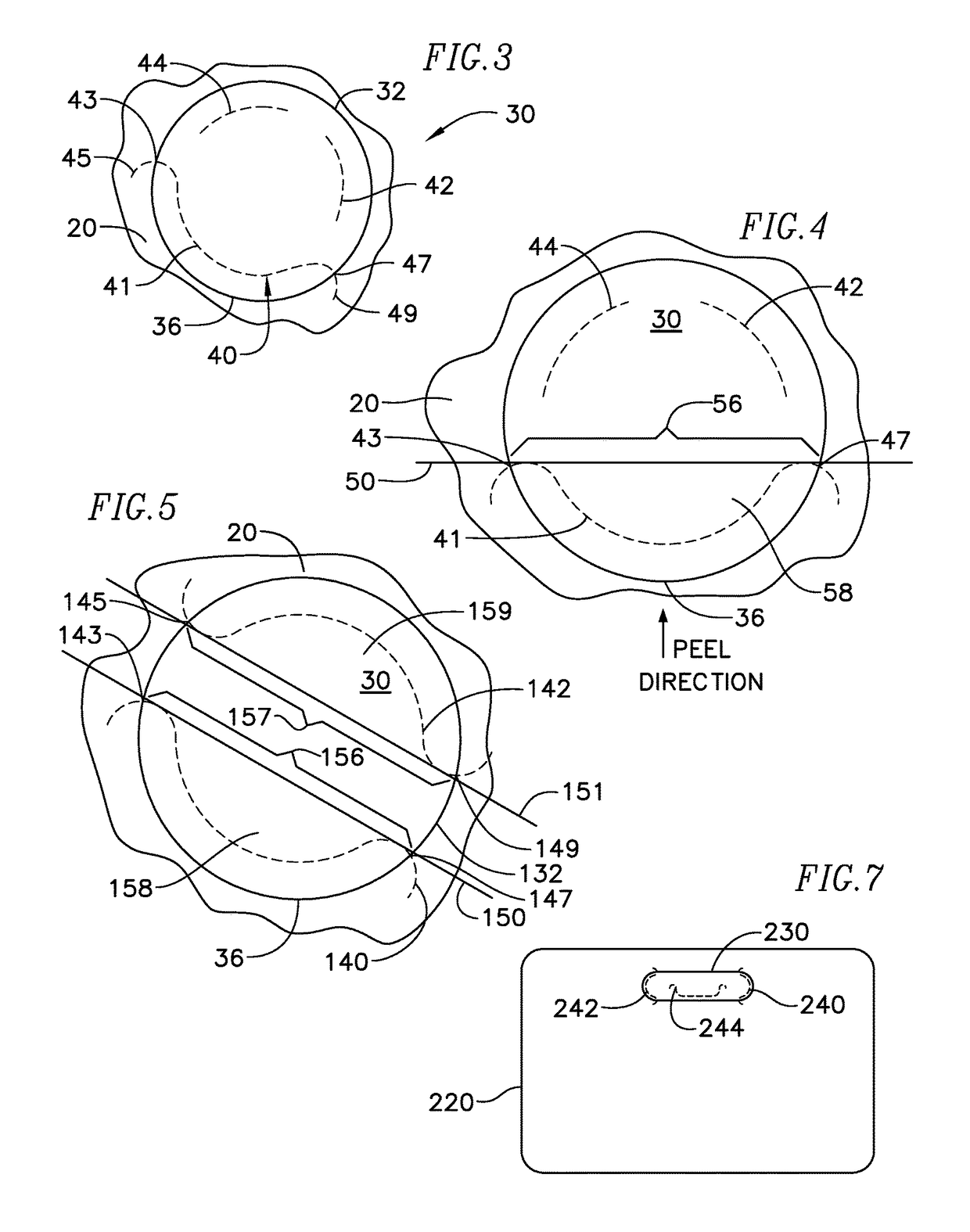Adhesive label liner sheet modifications for retaining unneeded label sections on liner
a technology of adhesive label and liner, which is applied in the field of modification of adhesive label liner, can solve the problems of insufficient strength, awkward separate steps, and sensitive adhesive on the back of the label, and achieve the effect of simple and inexpensive cutting
- Summary
- Abstract
- Description
- Claims
- Application Information
AI Technical Summary
Benefits of technology
Problems solved by technology
Method used
Image
Examples
first embodiment
[0037]The cuts shown in phantom in FIG. 1 and the slit 33 formed in liner 12 are not described in International Publication No. WO 02 / 38371-A1 and do form part of the present invention used for CD label sheets. In the figure, donut hole 30 is shown in fragment. The rear portion of the donut hole 30, peeled away last, is shown still attached to liner 12. The leading edge of donut hole 30, which in the figure as illustrated would be separated from label 20 and attached to liner 12 including the flap formed by slit 33, is cut away and not shown in order to reveal the structure and operation of the slit 33 in liner 12. Although exemplary label assembly 10 is shown with discrete facestock areas 14, 16 and 18 on liner sheet 12 with gaps between the separate areas, many other configurations are possible including label sheets in which the facestock completely covers the liner sheet. It will also be understood and apparent in view of the description which follows that the invention can be ...
fourth embodiment
[0050]A fourth environment and fourth embodiment are shown in FIGS. 8 and 9. In FIG. 8, a label sheet 60 contains a number of generally rectangular shaped labels 62. The corners of the labels 62 are rounded. As shown in the close up of FIG. 9, at the area where four of the generally rectangular labels 62 come together an unused diamond shaped portion of the facestock is formed. Cut 80 is formed in the liner sheet below the unused diamond shaped facestock portion. Cut 80 includes a first cut portion 82, and second and third cut portions 84 and 86. First cut portion 82 generally follows a contour of a boundary 64 between label 62 and the unused portion, and second and third cut portions 84 and 86 include arcuate semi-circular cut portions which cross the boundaryies.
[0051]The present invention is useful in facilitating separation of donut holes from labels where the donut hole or other hole lies completely internal to a label. However, the invention can also be used in applications wh...
fifth embodiment
[0052]FIG. 12 is a top plan view of the invention, in which the label is a name badge label 520 and the cutout 530 within the label is a hanger hole, with a single continuous cut 544 in the liner sheet.
PUM
| Property | Measurement | Unit |
|---|---|---|
| angle | aaaaa | aaaaa |
| angle | aaaaa | aaaaa |
| size | aaaaa | aaaaa |
Abstract
Description
Claims
Application Information
 Login to View More
Login to View More - R&D
- Intellectual Property
- Life Sciences
- Materials
- Tech Scout
- Unparalleled Data Quality
- Higher Quality Content
- 60% Fewer Hallucinations
Browse by: Latest US Patents, China's latest patents, Technical Efficacy Thesaurus, Application Domain, Technology Topic, Popular Technical Reports.
© 2025 PatSnap. All rights reserved.Legal|Privacy policy|Modern Slavery Act Transparency Statement|Sitemap|About US| Contact US: help@patsnap.com



